Fuel Tank Replacement Extended Cab - Side Tank
Removal Procedure
- Drain the fuel from the tank. Refer to Fuel Tank Draining .
- Raise the vehicle.
- Loosen the filler neck hose clamp at the fuel tank and disconnect the fuel tank filler neck from the fuel tank.
- Support the fuel tank and remove the tank straps and insulator strips, if equipped.
- Lower the fuel tank shield.
- With the aid of an assistant lower the fuel tank enough to gain access to the fuel lines and electrical connectors..
- Disconnect the fuel feed and vapor hoses.
- Disconnect the electrical connections at the sender.
- Remove the fuel sender assembly and seal ring, using tool J 39765 . Discard the old seal ring.
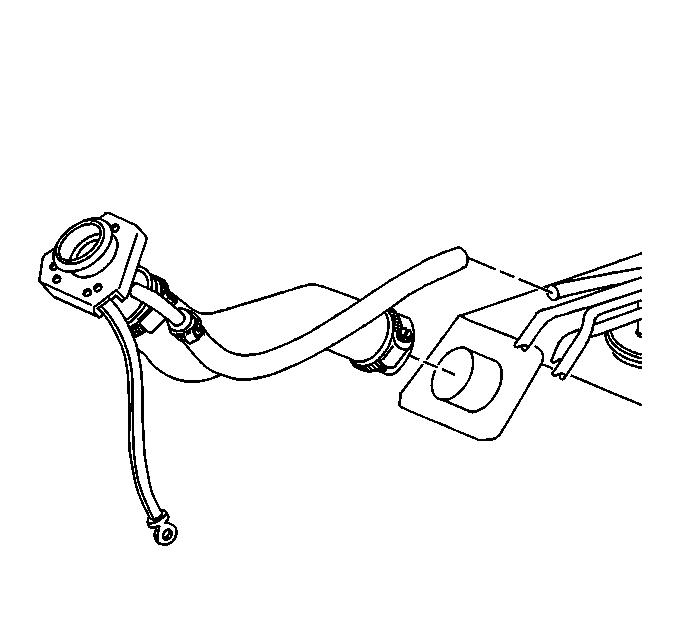
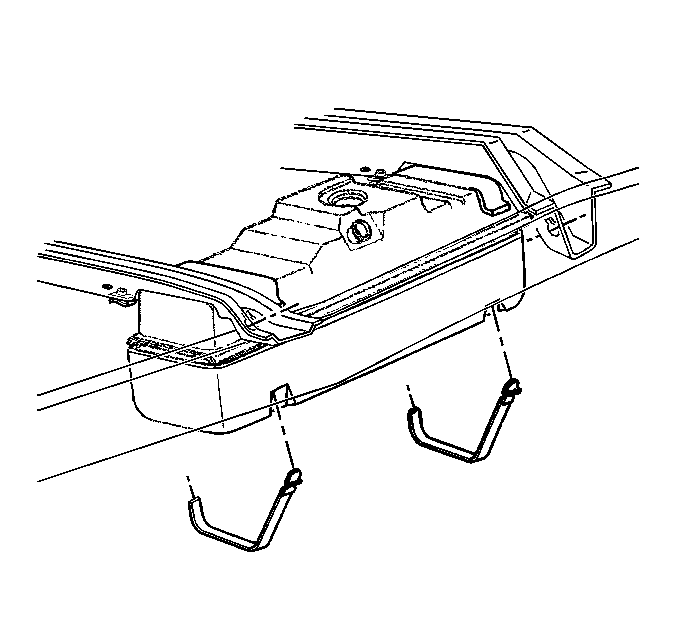
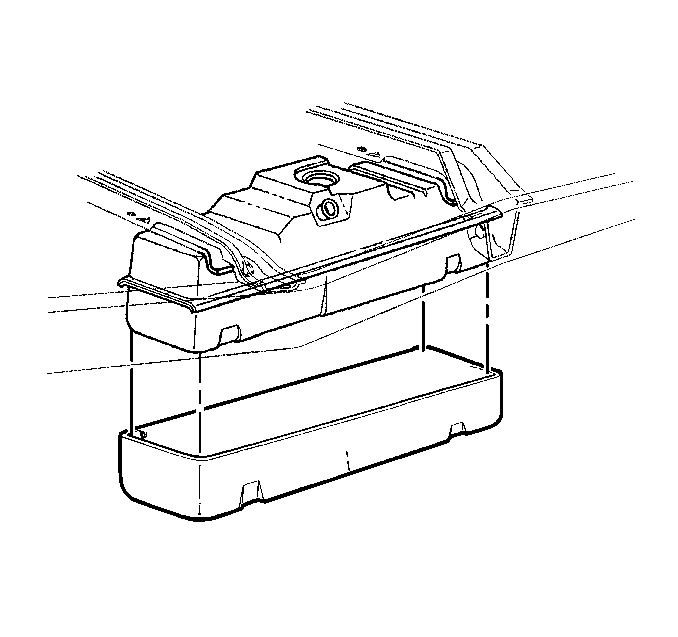
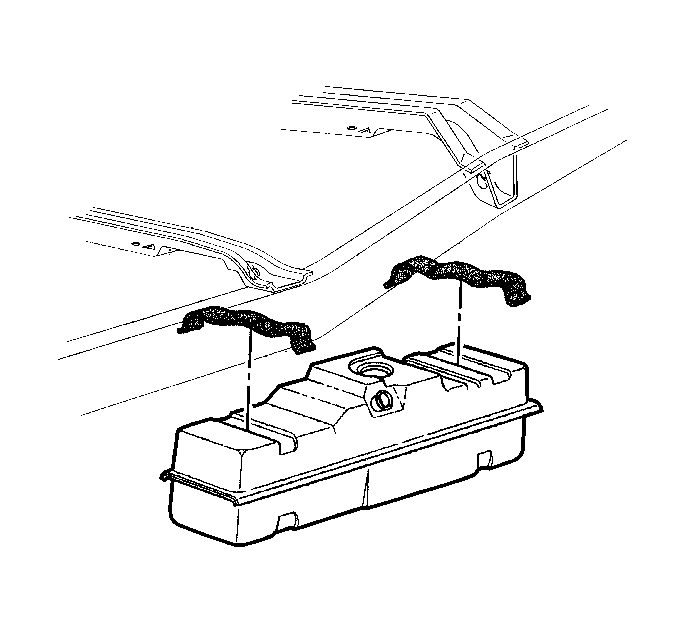
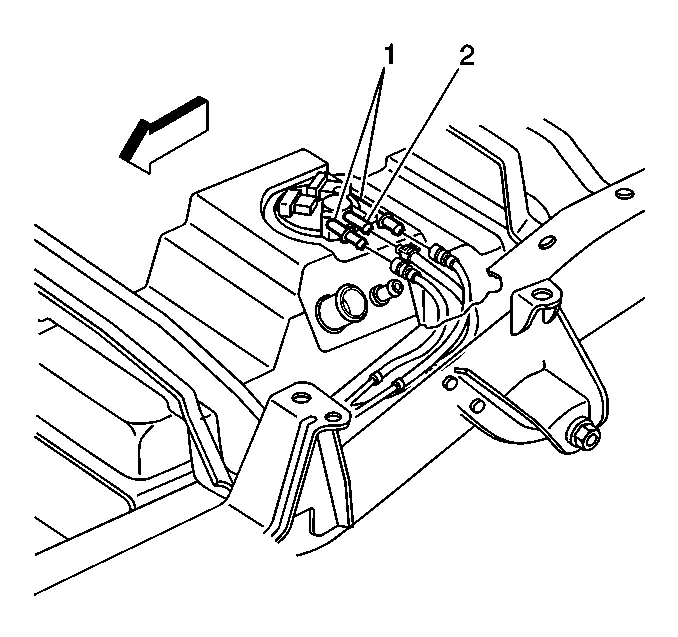
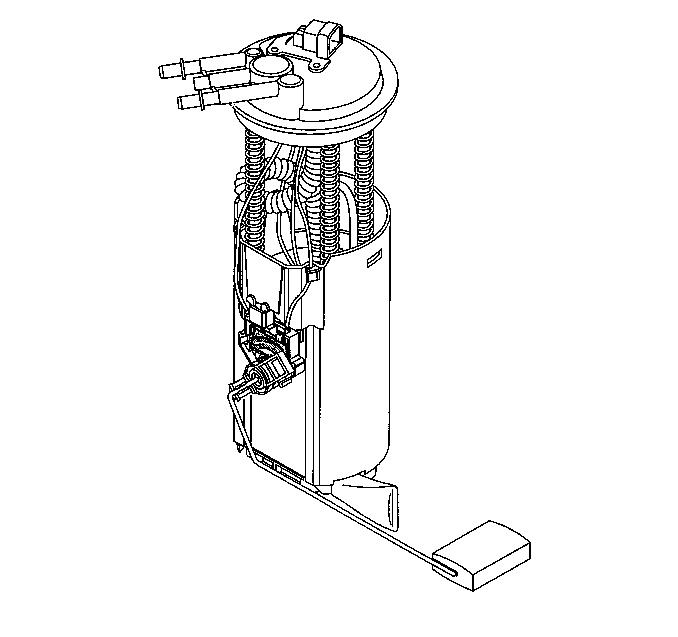
Installation Procedure
- Install the new seal ring and reinstall the sender using tool J 39765 .
- with the aid of an assistant raise the tank enough to allow for reconnection of the fuel feed and vapor hoses and the electrical connections at the sender.
- Raise the tank fully.
- Install the fuel tank shield.
- Reinstall the fuel tank filler neck to the tank. Tighten the clamp.
- Install the fuel tank brackets with insulator strips in place.
- Replenish the fuel in the tank. Reinstall the fuel tank filler cap.
- Reconnect the negative battery cable. If a memory retention device was not used, please reset (to the extent possible) all devices that lost their memory after the battery was disconnected.
- Check for fuel leaks.






Notice: Tighten the strap fasteners by steps, alternating between the fasteners, until the specified torque is reached. A failure to tighten the strap fasteners as specified will cause the bottom of the tank to flex upward. This will result in the fuel gauge indicating that there is fuel remaining in the tank when the tank is empty.
Notice: Use the correct fastener in the correct location. Replacement fasteners must be the correct part number for that application. Fasteners requiring replacement or fasteners requiring the use of thread locking compound or sealant are identified in the service procedure. Do not use paints, lubricants, or corrosion inhibitors on fasteners or fastener joint surfaces unless specified. These coatings affect fastener torque and joint clamping force and may damage the fastener. Use the correct tightening sequence and specifications when installing fasteners in order to avoid damage to parts and systems.
Important: When removing or replacing the fuel tank, the fuel tank support fasteners should never be reused. Always use new fasteners when installing the fuel tank.
Tighten
Tighten the fuel tank strap nuts to 13 N·m (115 lb in).
| 9.1. | Turn ON the ignition switch for 2 seconds. |
| 9.2. | Turn OFF the ignition switch for 10 seconds. |
| 9.3. | Again, turn the ignition switch to the ON position. |
| 9.4. | Check for fuel leaks. |
Fuel Tank Replacement Pick-up-Side Tank
Removal Procedure
- Drain the fuel from the tank. Refer to Fuel Tank Draining .
- Raise the vehicle.
- Loosen the filler neck hose clamp at the fuel tank and disconnect the fuel tank filler neck from the fuel tank.
- Support the fuel tank and remove the tank straps and insulator strips, if equipped.
- Remove the frame mounted bracket.
- Lower the fuel tank shield.
- With the aid of an assistant lower the fuel tank enough to allow access to the fuel lines and electrical connectors.
- Disconnect the fuel feed and vapor hoses. Disconnect the electrical connections at the sender.
- Remove the fuel sender assembly and seal ring, using tool J 39765 . Discard the old seal ring.


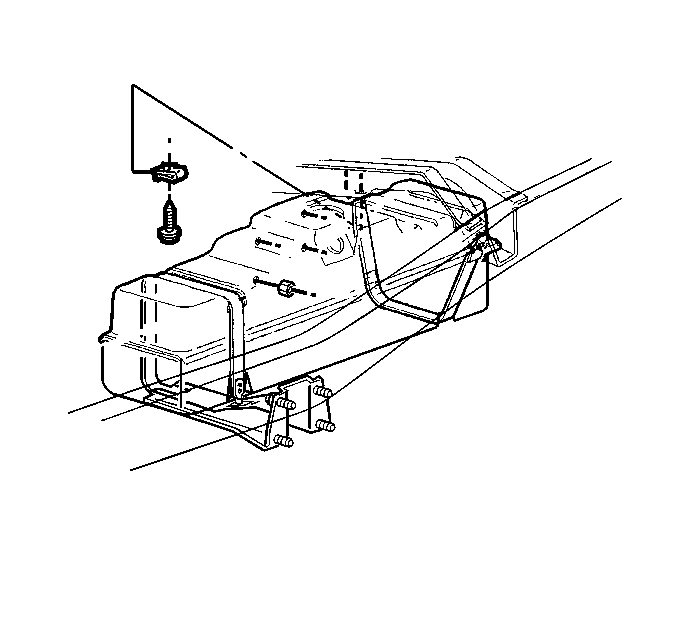
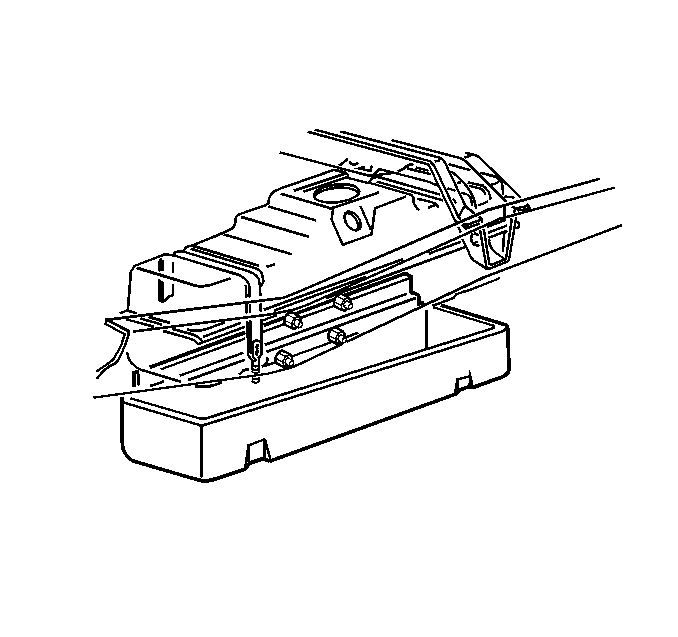
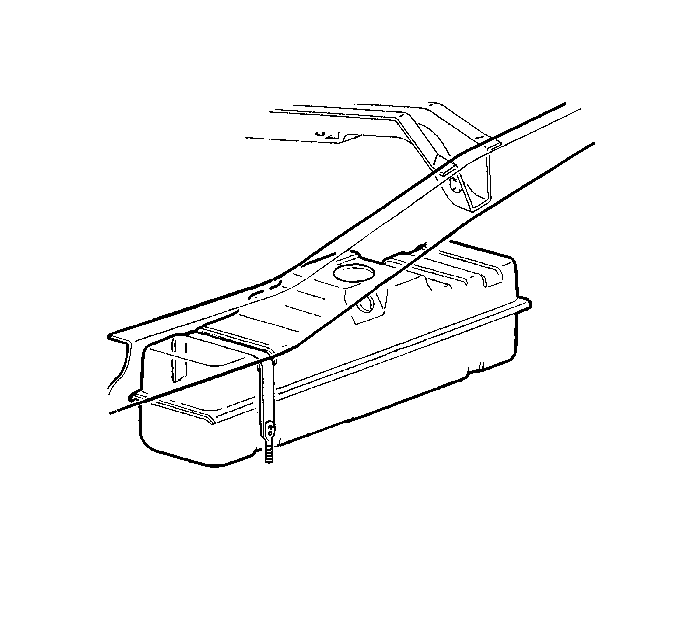


Installation Procedure
- Install the new seal ring and reinstall the sender using tool J 39765 .
- With the aid of an assistant raise the tank enough to allow for the reconnection of the the fuel feed and vapor hoses and the electrical connections at the sender.
- Raise the tank fully.
- Install the fuel tank shield.
- Reinstall the fuel tank filler neck to the tank. Tighten the clamp.
- Install the frame mounted bracket.
- Install the fuel tank brackets with insulator strips in place.
- Replenish the fuel in the tank. Reinstall the fuel tank filler cap.
- Reconnect the negative battery cable. If a memory retention device was not used, please reset (to the extent possible) all devices that lost their memory after the battery was disconnected.
- Check for fuel leaks.







Notice: Tighten the strap fasteners by steps, alternating between the fasteners, until the specified torque is reached. A failure to tighten the strap fasteners as specified will cause the bottom of the tank to flex upward. This will result in the fuel gauge indicating that there is fuel remaining in the tank when the tank is empty.
Notice: Use the correct fastener in the correct location. Replacement fasteners must be the correct part number for that application. Fasteners requiring replacement or fasteners requiring the use of thread locking compound or sealant are identified in the service procedure. Do not use paints, lubricants, or corrosion inhibitors on fasteners or fastener joint surfaces unless specified. These coatings affect fastener torque and joint clamping force and may damage the fastener. Use the correct tightening sequence and specifications when installing fasteners in order to avoid damage to parts and systems.
Important: When removing or replacing the fuel tank, the fuel tank support fasteners should never be reused. Always use new fasteners when installing the fuel tank.
Tighten
Tighten the fuel tank strap nuts to 13 N·m (115 lb in).
| 10.1. | Turn ON the ignition switch for 2 seconds. |
| 10.2. | Turn OFF the ignition switch for 10 seconds. |
| 10.3. | Again, turn the ignition switch to the ON position. |
| 10.4. | Check for fuel leaks. |
Fuel Tank Replacement Cab and Chassis - Side Tank
Removal Procedure
- Drain the fuel from the tank. Refer to Fuel Tank Draining .
- Raise the vehicle.
- Loosen the filler neck hose clamp at the fuel tank and disconnect the fuel tank filler neck from the fuel tank.
- Support the fuel tank and remove the tank straps and insulator strips, if equipped.
- With the aid of an assistant lower the fuel tank shield.
- Lower the fuel tank.
- Disconnect the fuel feed and vapor hoses.
- Disconnect the electrical connections at the sender.
- Remove the fuel sender assembly and seal ring, using tool J 39765 . Discard the old seal ring.
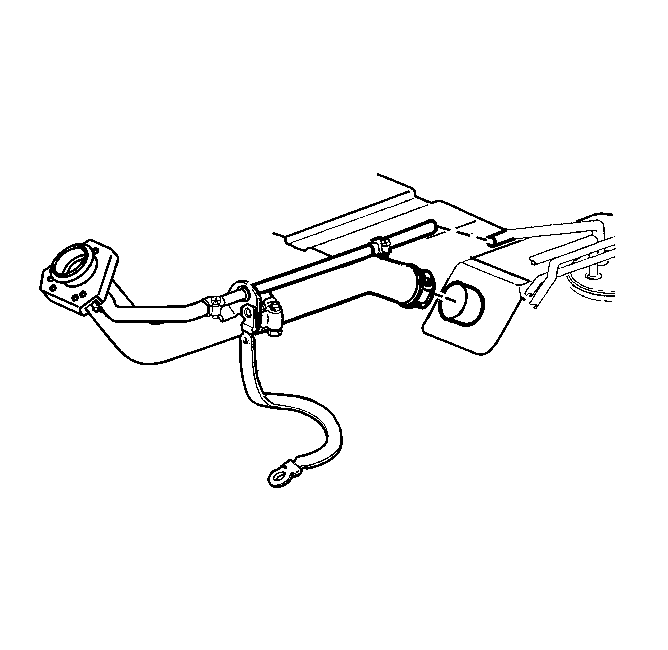
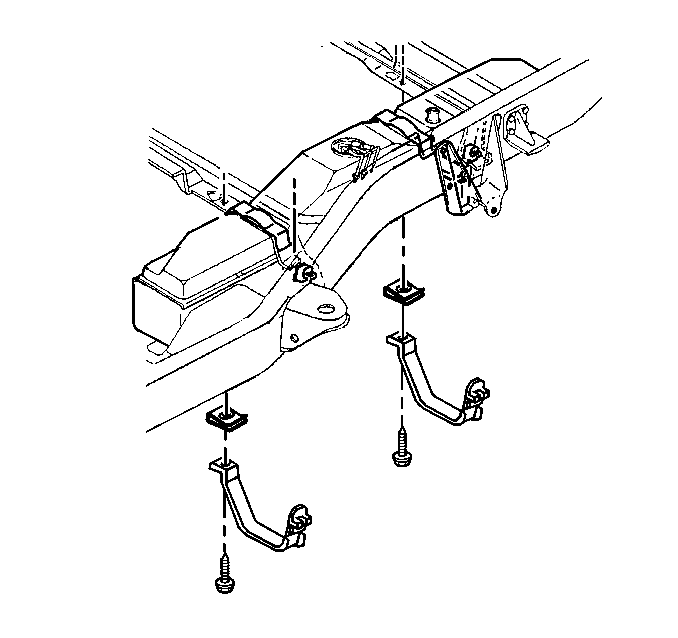
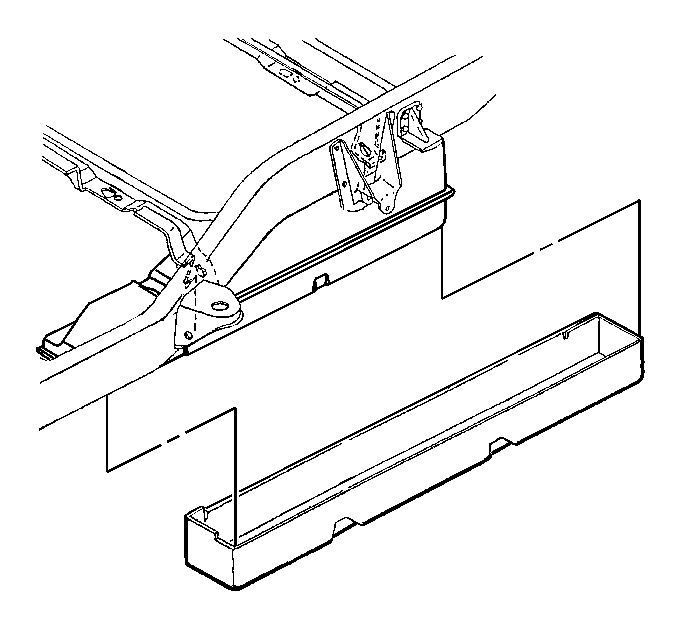



Installation Procedure
- Install the new seal ring and reinstall the sender using tool J 39765 .
- With the aid of an assistant raise the tank to allow for the reconnection of the fuel feed and vapor hoses and the electrical connections at the sender.
- Raise the tank fully.
- Install the fuel tank shield.
- Reinstall the fuel tank filler neck to the tank. Tighten the clamp.
- Install the fuel tank brackets with insulator strips in place.
- Replenish the fuel in the tank. Reinstall the fuel tank filler cap.
- Reconnect the negative battery cable. If a memory retention device was not used, please reset (to the extent possible) all devices that lost their memory after the battery was disconnected.
- Check for fuel leaks.






Notice: Tighten the strap fasteners by steps, alternating between the fasteners, until the specified torque is reached. A failure to tighten the strap fasteners as specified will cause the bottom of the tank to flex upward. This will result in the fuel gauge indicating that there is fuel remaining in the tank when the tank is empty.
Notice: Use the correct fastener in the correct location. Replacement fasteners must be the correct part number for that application. Fasteners requiring replacement or fasteners requiring the use of thread locking compound or sealant are identified in the service procedure. Do not use paints, lubricants, or corrosion inhibitors on fasteners or fastener joint surfaces unless specified. These coatings affect fastener torque and joint clamping force and may damage the fastener. Use the correct tightening sequence and specifications when installing fasteners in order to avoid damage to parts and systems.
Important: When removing or replacing the fuel tank, the fuel tank support fasteners should never be reused. Always use new fasteners when installing the fuel tank.
Tighten
Tighten the fuel tank strap nuts to 13 N·m (115 lb in).
| 9.1. | Turn ON the ignition switch for 2 seconds. |
| 9.2. | Turn OFF the ignition switch for 10 seconds. |
| 9.3. | Again, turn the ignition switch to the ON position. |
| 9.4. | Check for fuel leaks. |
Fuel Tank Replacement Cab and Chassis - Rear Tank
Removal Procedure
- Drain the fuel from the tank. Refer to Fuel Tank Draining .
- Raise the vehicle.
- Remove the fuel tank off-road shield, if equipped.
- Loosen the filler neck hose clamp at the fuel tank and disconnect the fuel tank filler neck from the fuel tank.
- Support the fuel tank and remove the tank straps and insulator strips, if equipped.
- with the aid of an assistant lower the fuel tank.
- Disconnect the fuel feed and vapor hoses.
- Disconnect the electrical connections at the sender.
- Remove the fuel sender assembly and seal ring, using tool J 39765 . Discard the old seal ring. Purge the tank, if the tank is being repaired.
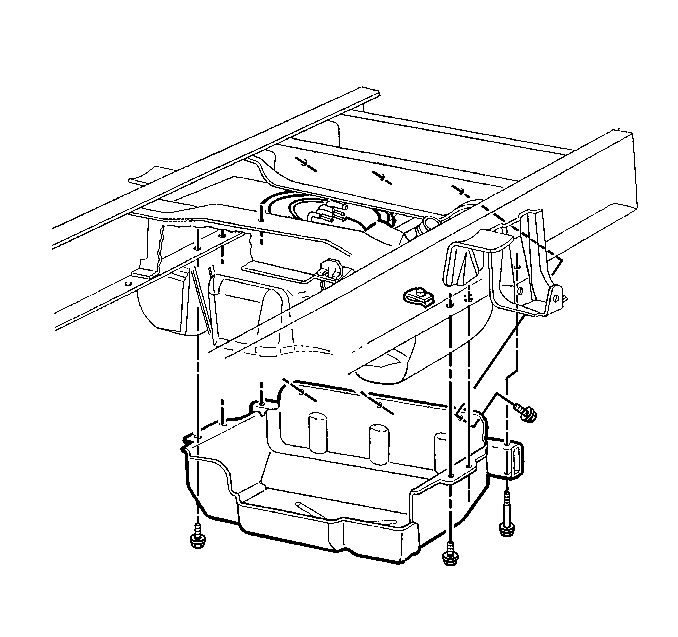

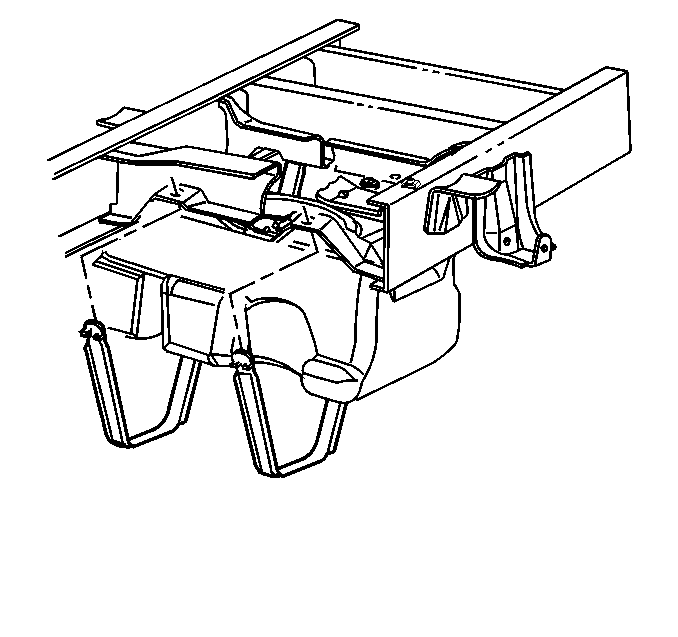


Installation Procedure
- Install the new seal ring and reinstall the sender using tool J 39765 .
- With the aid of an assistant raise the tank enoght to allow for the reconnection of the fuel feed and vapor hoses and the electrical connections at the sender.
- Raise the tank fully.
- Reinstall the fuel tank filler neck to the tank. Tighten the clamp.
- Install the fuel tank brackets with insulator strips in place.
- Install the fuel tank off-road shield, if equipped.
- Replenish the fuel in the tank. Reinstall the fuel tank filler cap.
- Reconnect the negative battery cable. If a memory retention device was not used, please reset (to the extent possible) all devices that lost their memory after the battery was disconnected.
- Check for fuel leaks.




Notice: Tighten the strap fasteners by steps, alternating between the fasteners, until the specified torque is reached. A failure to tighten the strap fasteners as specified will cause the bottom of the tank to flex upward. This will result in the fuel gauge indicating that there is fuel remaining in the tank when the tank is empty.
Notice: Use the correct fastener in the correct location. Replacement fasteners must be the correct part number for that application. Fasteners requiring replacement or fasteners requiring the use of thread locking compound or sealant are identified in the service procedure. Do not use paints, lubricants, or corrosion inhibitors on fasteners or fastener joint surfaces unless specified. These coatings affect fastener torque and joint clamping force and may damage the fastener. Use the correct tightening sequence and specifications when installing fasteners in order to avoid damage to parts and systems.
Important: When removing or replacing the fuel tank, the fuel tank support fasteners should never be reused. Always use new fasteners when installing the fuel tank.
Tighten
Tighten the strap nuts to 35 N·m (47 lb ft).

| 9.1. | Turn ON the ignition switch for 2 seconds. |
| 9.2. | Turn OFF the ignition switch for 10 seconds. |
| 9.3. | Again, turn the ignition switch to the ON position. |
| 9.4. | Check for fuel leaks. |
